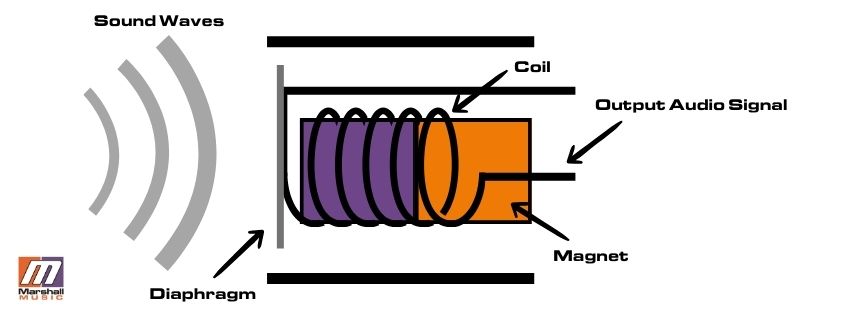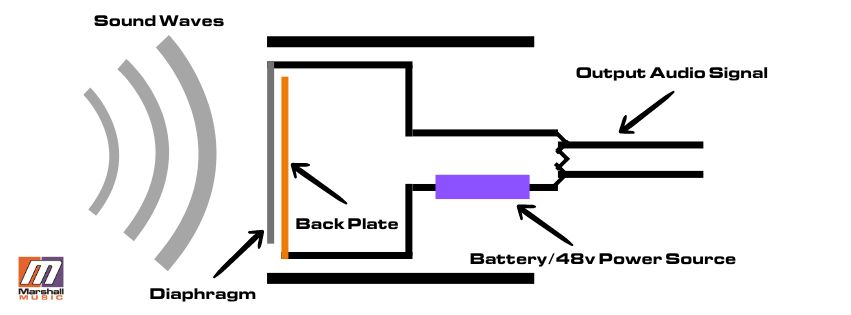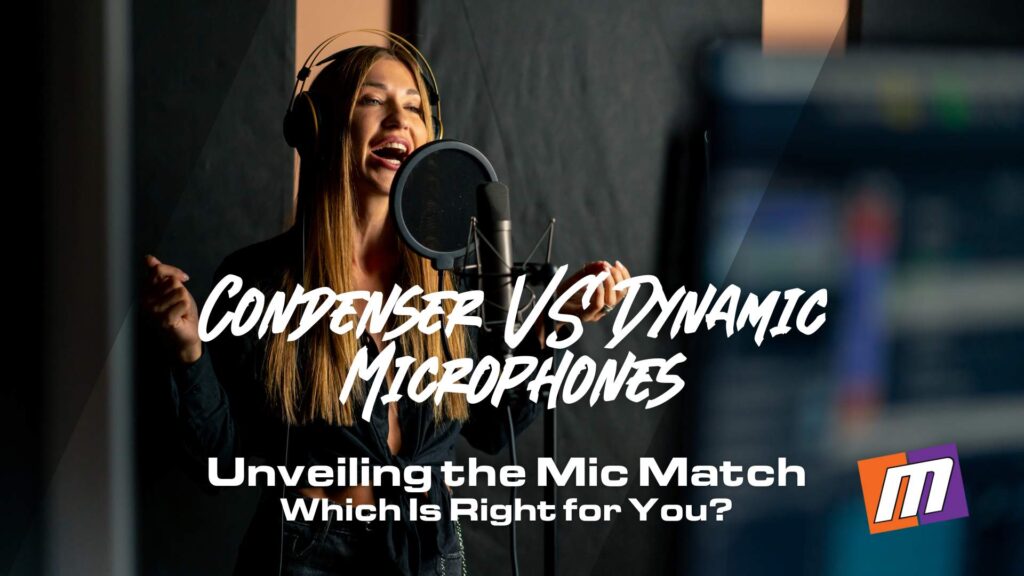Microphones, those ubiquitous sound warriors, capture the essence of audio, transforming our voices and instruments into electrical signals. But within this seemingly simple function lies a world of variety. Today, we delve into the two main microphone types: condensers and dynamics. Understanding their distinct personalities will empower you to choose the perfect mic for any sonic scenario.
The Inner Workings: A Tale of Two Technologies
Dynamic Microphones: Rugged Workhorses

Imagine a tiny generator. That’s the essence of a dynamic mic. Sound waves vibrate a thin diaphragm attached to a coil of wire. This movement cuts through a magnetic field, inducing an electrical current – a replica of the original sound. Dynamic mics are renowned for their:
- Durability: Their simple design can withstand the bumps and bruises of live performances.
- High Sound Pressure Handling: Loud sources like drums and guitar cabinets pose no problem.
- Rejection of Background Noise: Their focused pickup pattern minimizes unwanted sounds.

Condenser Microphones: Capturing Every Nuance

Condenser mics take a more delicate approach. They function like tiny capacitors, with two thin plates separated by air. One plate is charged with a constant voltage, and sound waves cause the plates to vibrate, altering their capacitance. This change translates into an electrical signal mirroring the sound.
Condenser mics are prized for their:
- High Sensitivity: They pick up even the subtlest sounds, ideal for quiet environments and detailed recordings.
- Wider Frequency Response: They capture a broader range of frequencies, resulting in a more natural and accurate sound.
- Varied Polar Patterns: Many offer switchable pickup patterns, allowing for precise audio capture.

Applications: Where Each Mic Shines
Knowing their strengths, let’s explore where each mic excels:
- Dynamic Microphones:
- Live Vocals: Their ability to handle loud volumes and background noise makes them perfect for energetic singers.
- Snare Drums and Electric Guitars: Their punchy character cuts through the mix on these dynamic instruments.
- Broadcast Journalism: Their durability makes them ideal for capturing interviews on-the-go.
- Condenser Microphones:
- Studio Vocals and Acoustic Instruments: Their nuanced detail brings out the best in a performer’s voice or the delicate resonance of a guitar.
- Overheads for Drum Recording: They capture the entire drum kit with remarkable clarity.
- Room Miking: Their ability to capture the ambience of a space is invaluable for live recordings and creating atmospheric recordings.
The Final Note: Choosing Your Mic
Ultimately, the best microphone depends on your specific needs. Consider the sound source, recording environment, and desired sonic character. Here’s a quick cheat sheet:
- For high sound pressure levels, background noise rejection, and live applications – Dynamic mics are your go-to.
- For capturing detailed sound in controlled environments, studio recording, and versatility – Condenser mics reign supreme.
Remember, experimentation is key! Don’t be afraid to try different microphones to discover the perfect match for your sonic vision. With this knowledge in your arsenal, you’ll be well on your way to capturing captivating audio.
Follow this link to check out all the Condenser Microphones available at Marshall Music.
And follow this link for all the Dynamic Microphones available at Marshall Music.

